Post by Mackenzie Wang, Northwest Noggin outreach participant and undergraduate in Psychology pursuing an Interdisciplinary Neuroscience minor at Portland State University.

On a wet fall morning, NW Noggin volunteers arrived at Dr. Martin Luther King Jr. Elementary School in Northeast Portland, Oregon to hear from students in kindergarten through 5th grade. We were curious to discover what they already knew about brains and wanted to discuss about neuroscience. During that day-long visit, we spoke with over 300 students, nearly 50 kids per grade.
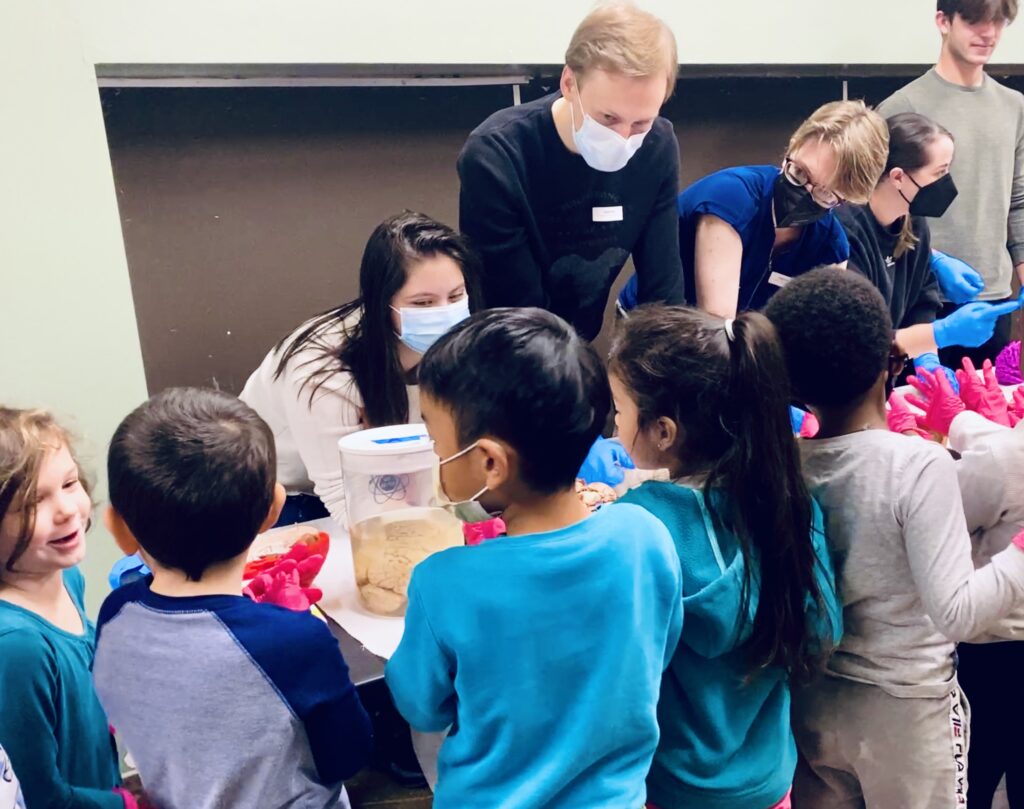
NO brains in School?
For me this was an amazing opportunity to talk with younger students about the brain, which has historically not been taught in our public schools! In fact, both federal and state Next Generation Science Standards (NGSS) basically ignore our nervous system, save for two brief mentions during fourth grade:
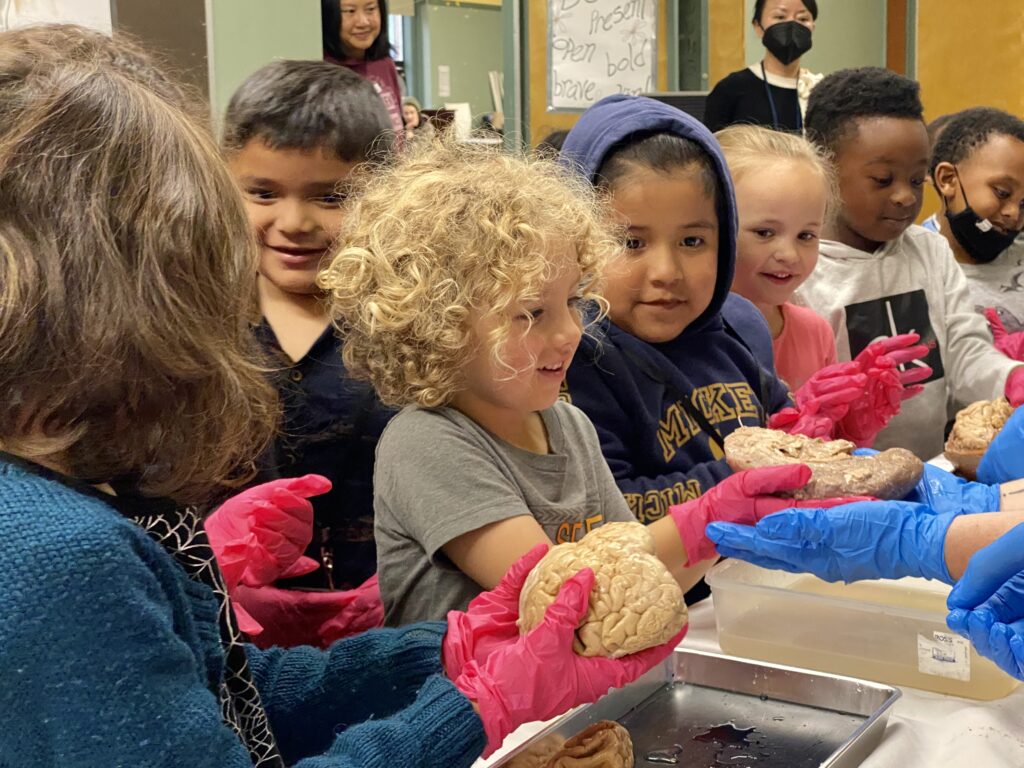
4.LS1: “Construct an argument that plants and animals have internal and external structures that function to support survival, growth, behavior and reproduction… Examples of structures include… stomach, lung, brain, and skin”
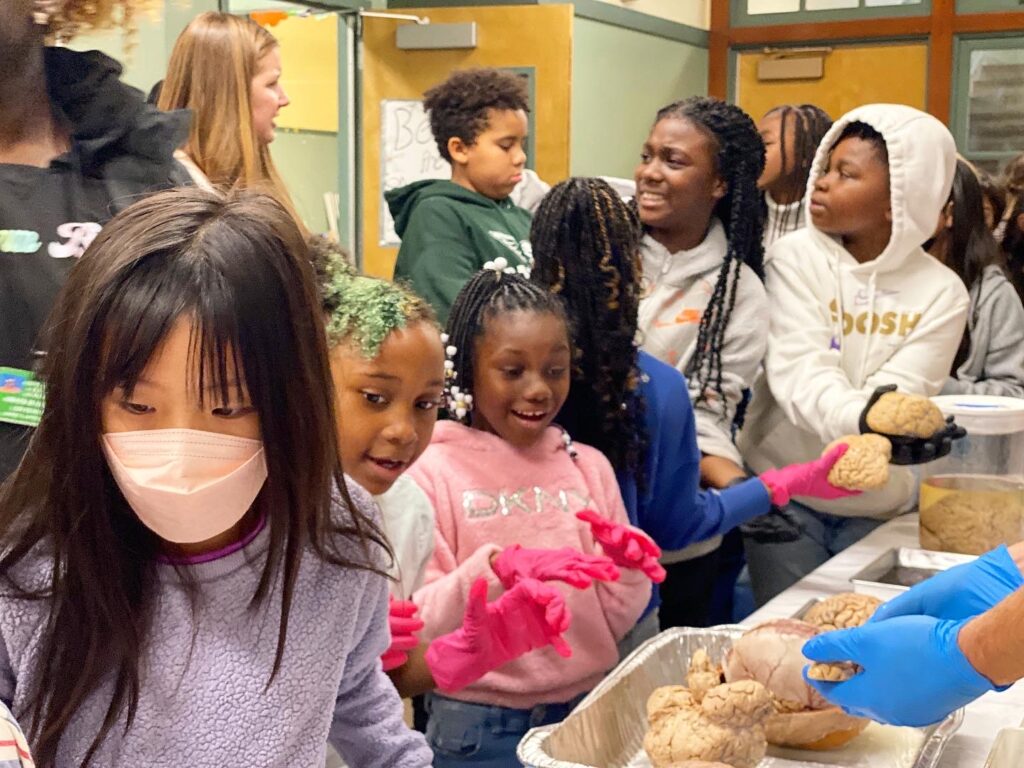
4.LS2: “Use a model to describe that animals receive different types of information through their senses, process the information in their brain, and respond to the information in different ways”
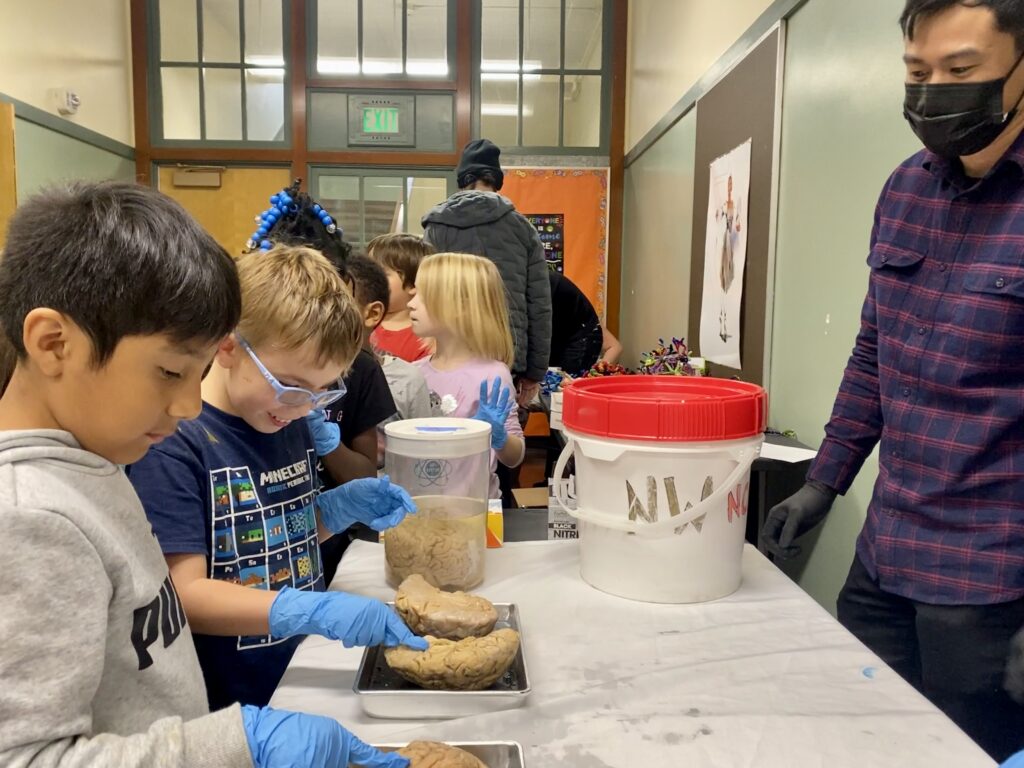
This is pretty ridiculous; and as Noggin has noted in posts before, education professionals and politicians apparently took the “brains” out of biology. Do some of these decision-making adults not want our young people to know that they have brains capable of incredible growth and change?
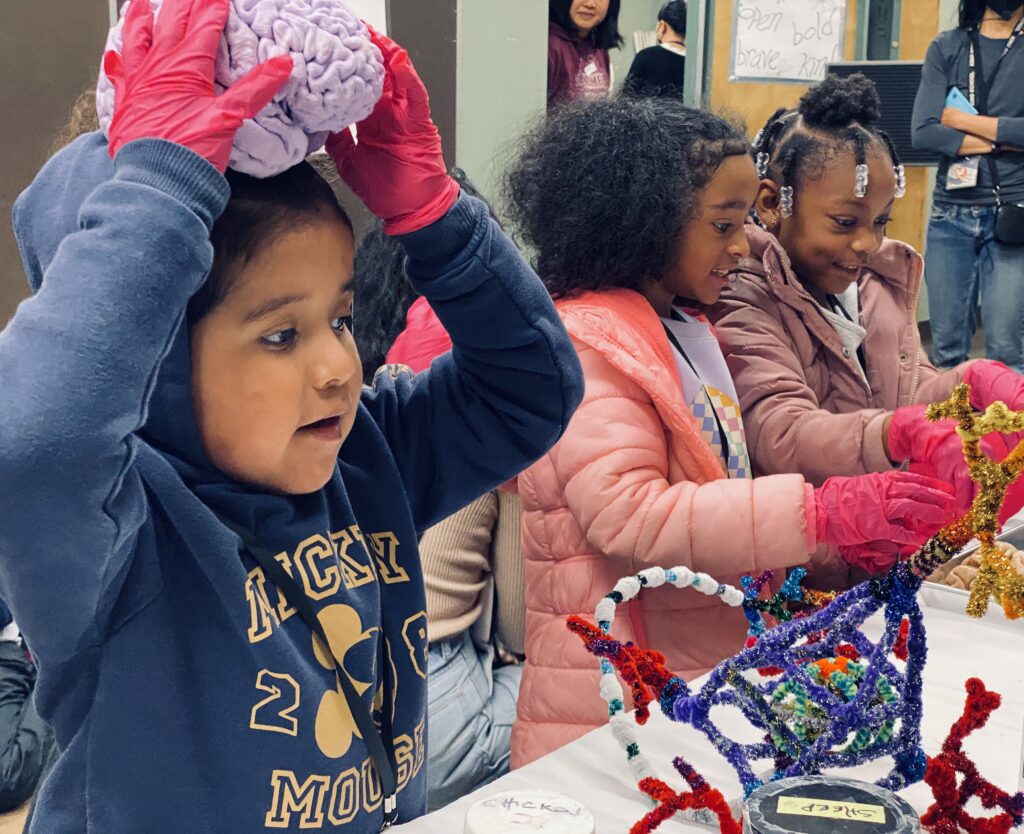
LEARN MORE: Putting brains back in biology @ HS2
More Brains Please
And yet wow do young people want to know about brains!

Brains are intrinsically motivating, as we’re all pretty curious about what makes us who we are. And by inviting students to ask their own questions about our brains and behavior, while examining real specimens and making art, they clearly get motivated to contribute, engage and learn.
LEARN MORE: The Emerging Neuroscience of Intrinsic Motivation
Questions!
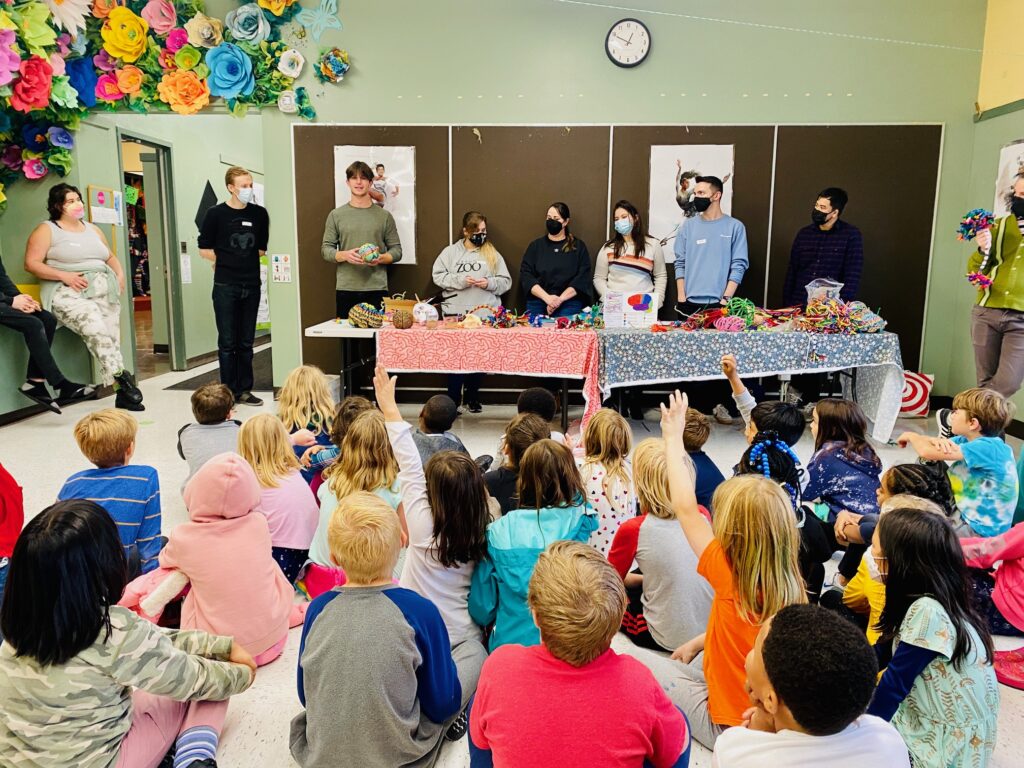
In doing our outreach, which is entirely volunteer, we hope to spark young people’s curiosity about noggins, and to help pave the way for future generations of neuroscience researchers. The children we met were energetic, inquisitive, and sparked a lot of discussion and thought amongst our volunteers.
Some of the amazing questions they asked include:
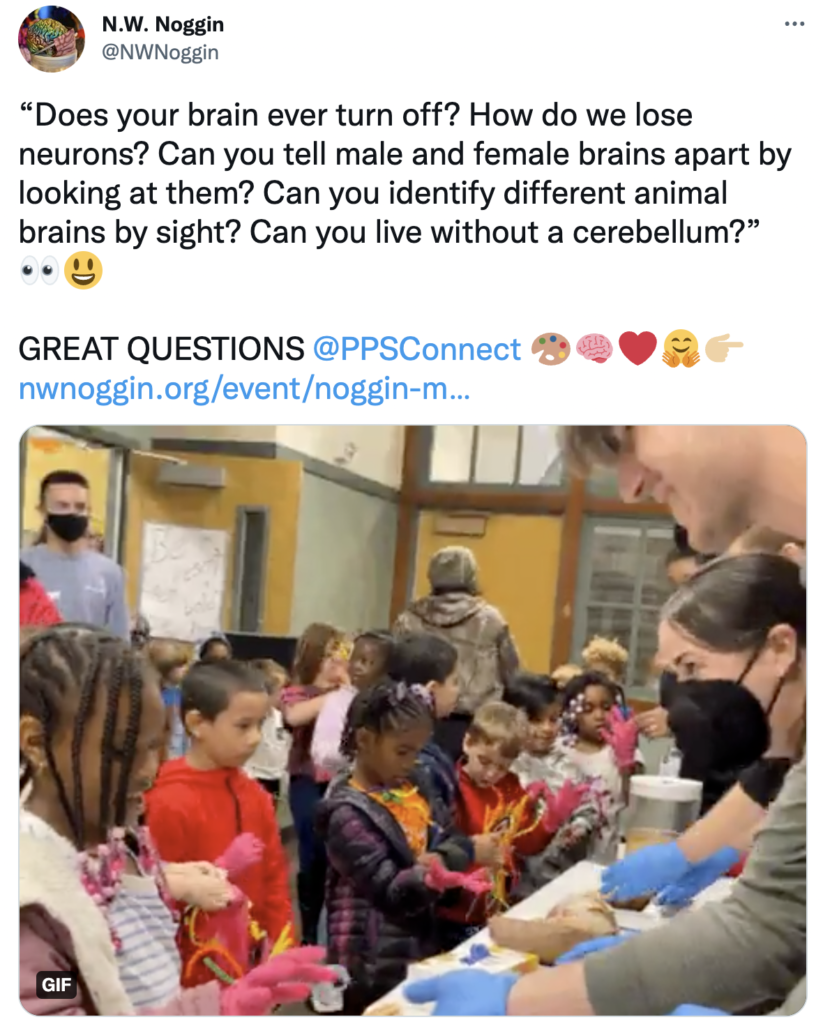
Q: Does your brain ever turn off?
A: Your brain is always working, even when you are asleep! The brain just works in a different way when you are asleep, which you can see in EEGs that are done when people are awake and fall asleep.
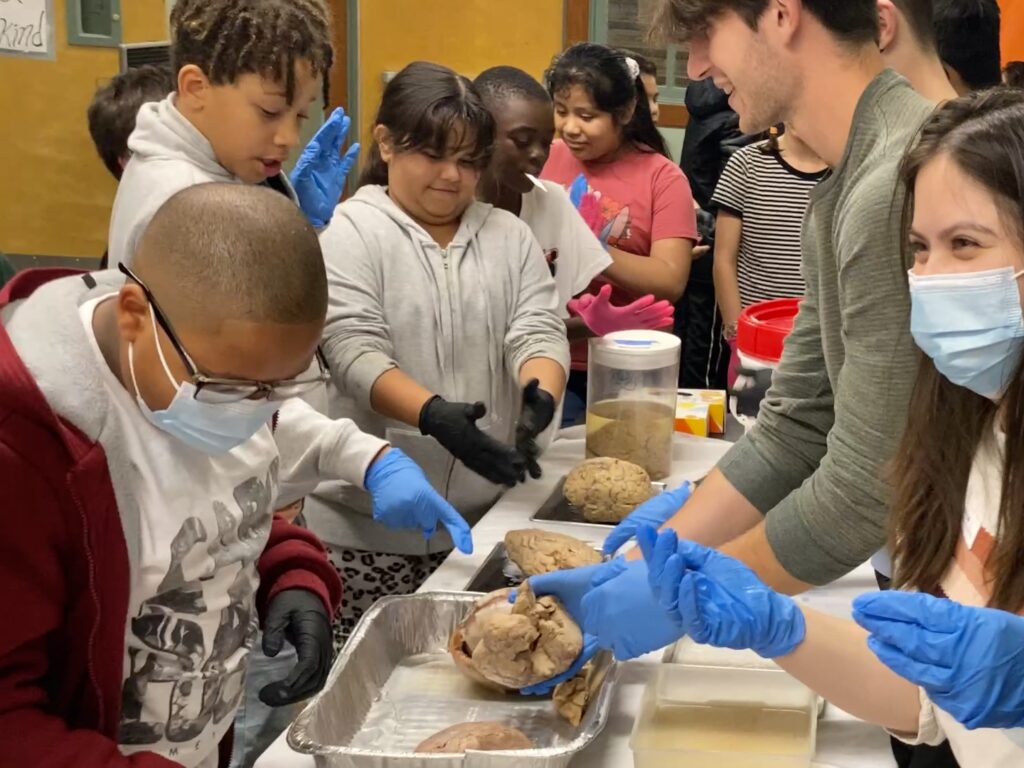
LEARN MORE: Brain Energetics During the Sleep-Wake Cycle
LEARN MORE: Noggins in Nod
Q: How do we lose neurons?
A: The brain is a malleable and flexible thing. When you repeat behaviors or thoughts, neurons actually alter their connections (called synapses). They will reach out to form new synapses with each other, and cut back (or prune) other synapses – and even kill off entire brain cells! – that aren’t useful for the job. This creates stronger neural pathways for your brain to do the things you do more efficiently.
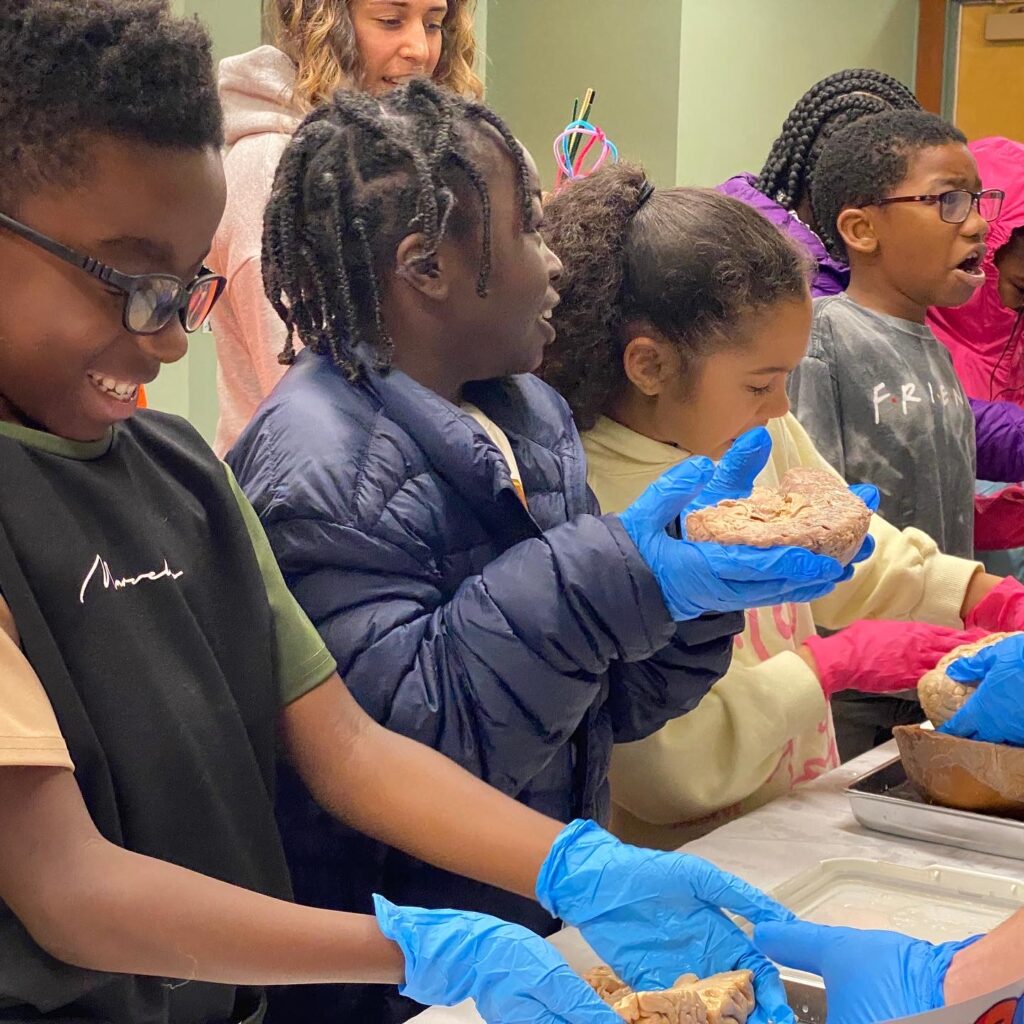
Babies have about 200 billion neurons, but by the time they reach adulthood their neuron count is decreased to around 86 billion. This is because as we grow, we develop patterns and habits which form more useful but fewer and more specific network connections. So every time you learn something new or practice something, you are changing the composition of your brain!
Q: Can you tell male and female brains apart by looking at them?
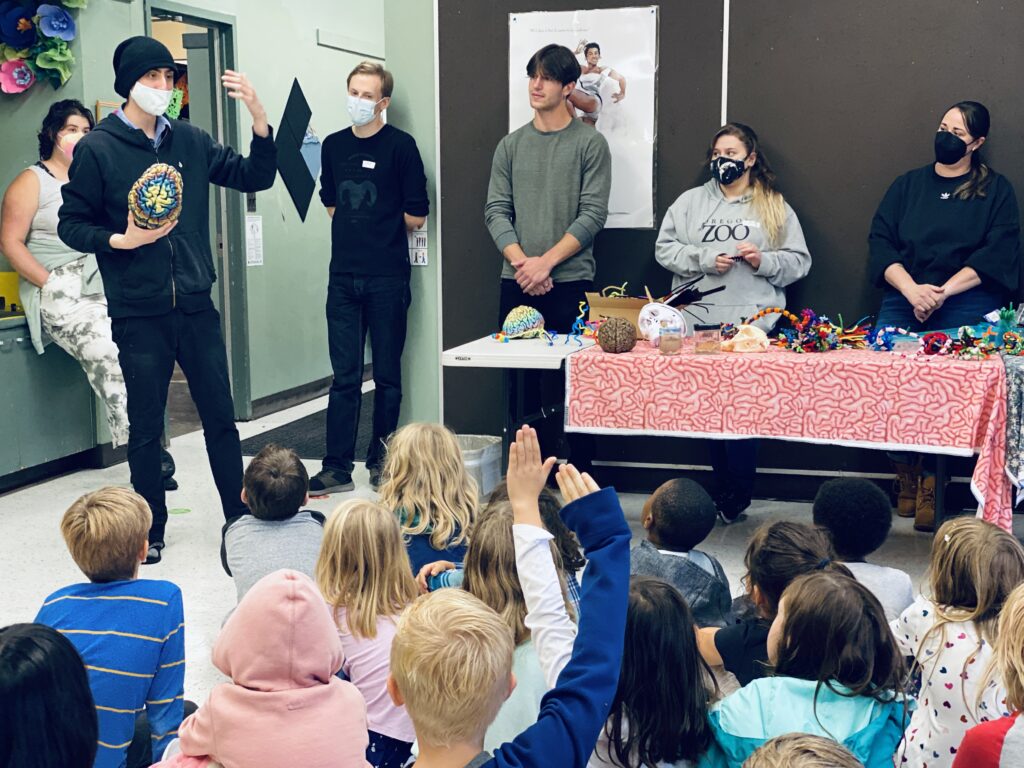
A: Scientists are generally unable to tell male or female brains apart just by looking at them. Brains look pretty much alike! And there are so many complex factors that determine how our brains develop, along with how we feel and what our bodies look like, that we individually identify ourselves in many ways – male, female, nonbinary, transgender and more. A wonderful diversity of brains.
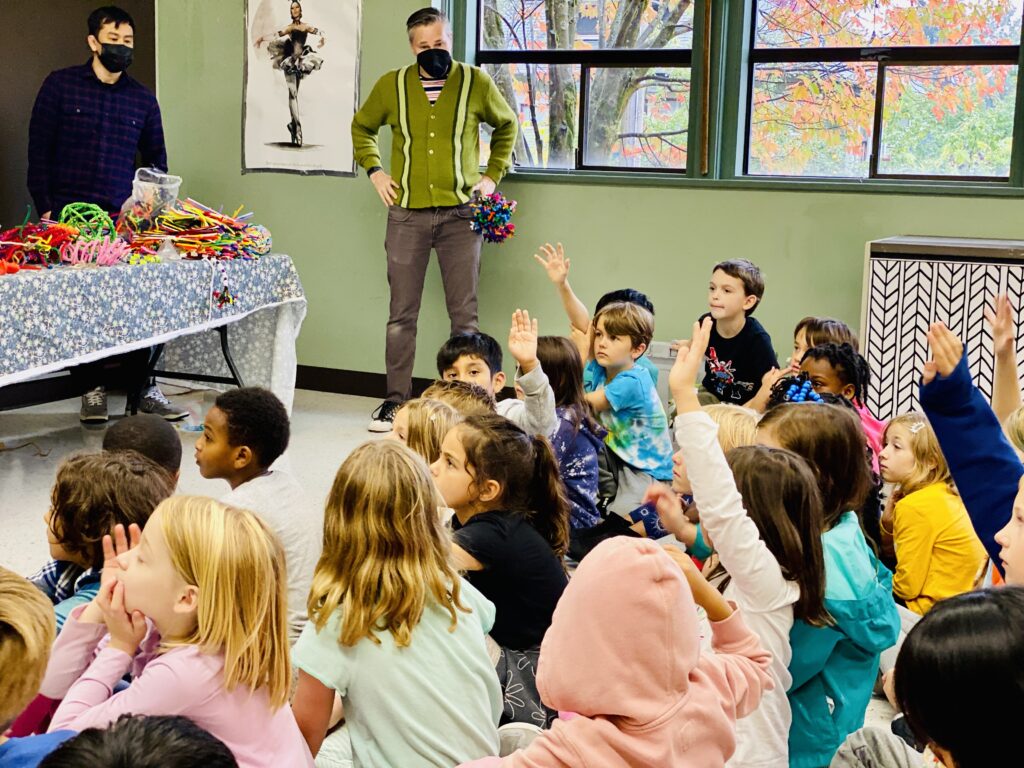
– Margaret M McCarthy and Arthur P Arnold
“New evidence has accumulated to warrant a shift away from the old serial model and toward a more complex and nuanced model in which numerous sex-specific factors, hormonal, genetic and epigenetic, act in parallel to cause or eliminate sex differences in the brain and other tissues…”
LEARN MORE: Sex differences in brain anatomy
LEARN MORE: The Neuroanatomy of Transgender Identity
LEARN MORE: Brains & Sex @ SfN
Q: Where did you get all of these brains?
A: NW Noggin got the brains via donation. Some wonderful people elected to donate their bodies to science, and their brains were one of the parts that was able to be passed on.
LEARN MORE: A BioGift of Brains
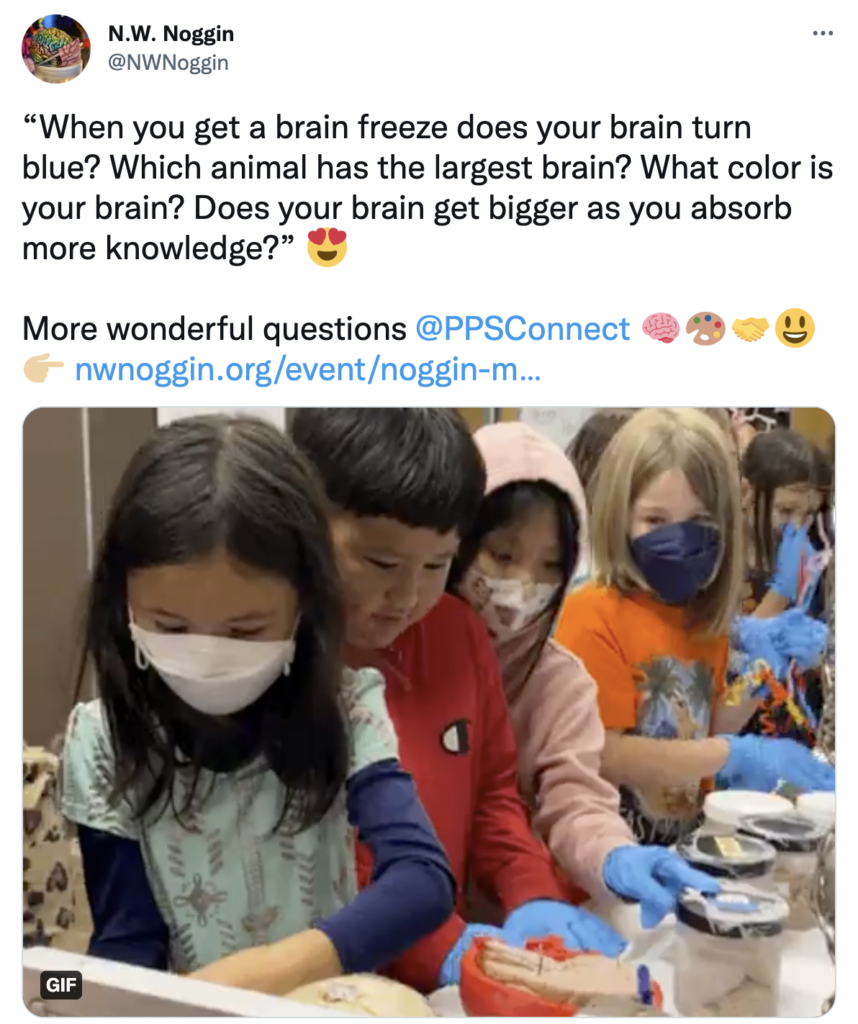
Q: Which animal has the largest brain?
A: The animal with the largest brain is the sperm whale. Sperm whales have brains that can weigh up to 18 pounds!
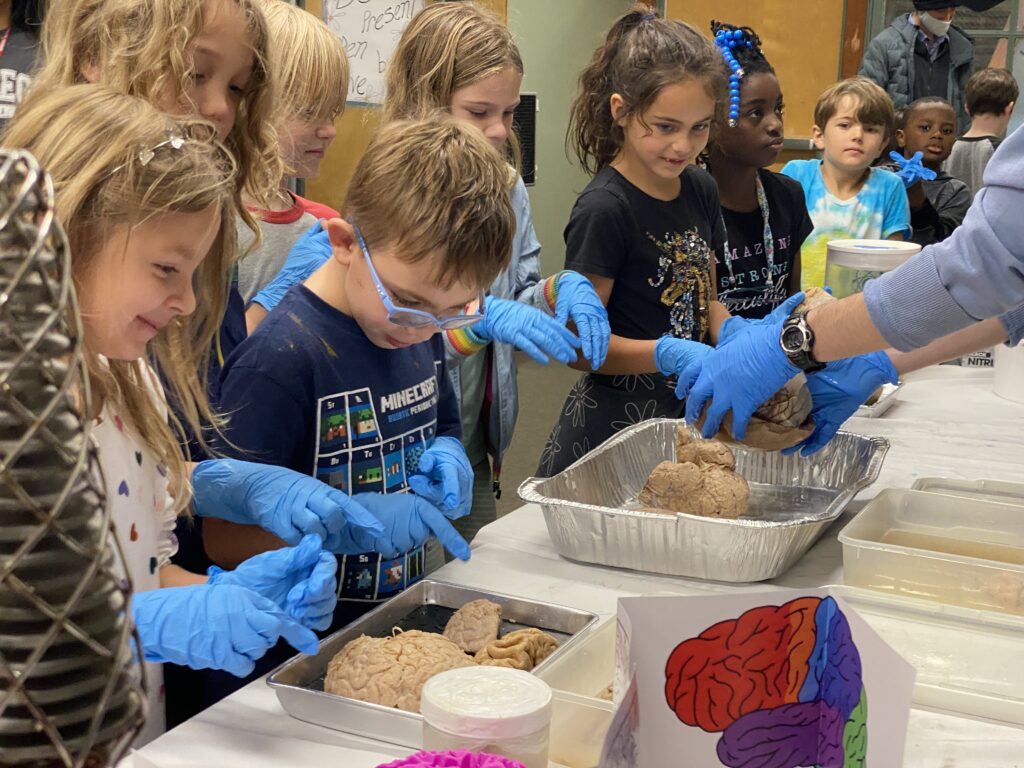
But while brain size is important, not all brains are equal in terms of cell density! Humans and other primates have very dense brains, with lots of neurons packed into small spaces, whiles the brains of rats and mice are far less crowded. Some crows, ravens and parrots may have humans beat, with even more cells per unit area. And some of the densest brains on our planet apparently belong to (some) bees!
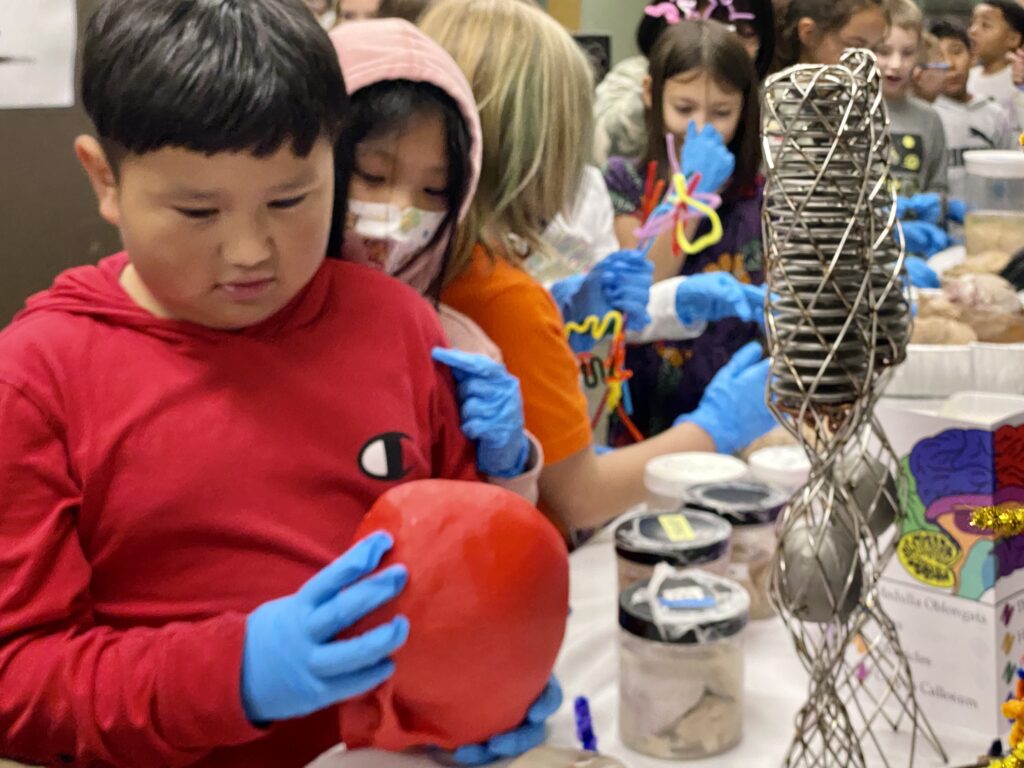
LEARN MORE: Soup for Brains!
LEARN MORE: The Human Brain in Numbers: A Linearly Scaled-up Primate Brain
LEARN MORE: Birds have primate-like numbers of neurons in the forebrain
LEARN MORE: The evolution of brain structure captured in stereotyped cell count and cell type distributions
LEARN MORE: Feeding specialization and longer generation time are associated with relatively larger brains in bees
LEARN MORE: Brain size predicts learning abilities in bees
Q: Does your brain get bigger as you absorb more knowledge?
A: When you learn something new, your brain will change synapses. It may grow new synapses, but might also weaken or lose (prune) others. Once you’re an adult, the brain stays relatively the same size. However, there are some pretty dramatic changes in brain size in childhood and adolescence, and also towards the end of life.

“A wave of growth occurs during childhood/adolescence, where around 9 years of age a 1% annual brain growth is found which levels off until at age 13 a gradual volume decrease sets in. During young adulthood, between ∼18 and 35 years of age, possibly another wave of growth occurs or at least a period of no brain tissue loss. After age 35 years, a steady volume loss is found of 0.2% per year, which accelerates gradually to an annual brain volume loss of 0.5% at age 60. The brains of people over 60 years of age show a steady volume loss of more than 0.5%.”
– Human brain changes across the life span
This visit was incredibly fulfilling and fun not only for NW Noggin, but also the students of MLK Elementary. Teresa Seidel, the principal of MLK Elementary, said that the children loved seeing the real brains, comparing the size of brains of different animals, and making neurons out of pipe cleaners.
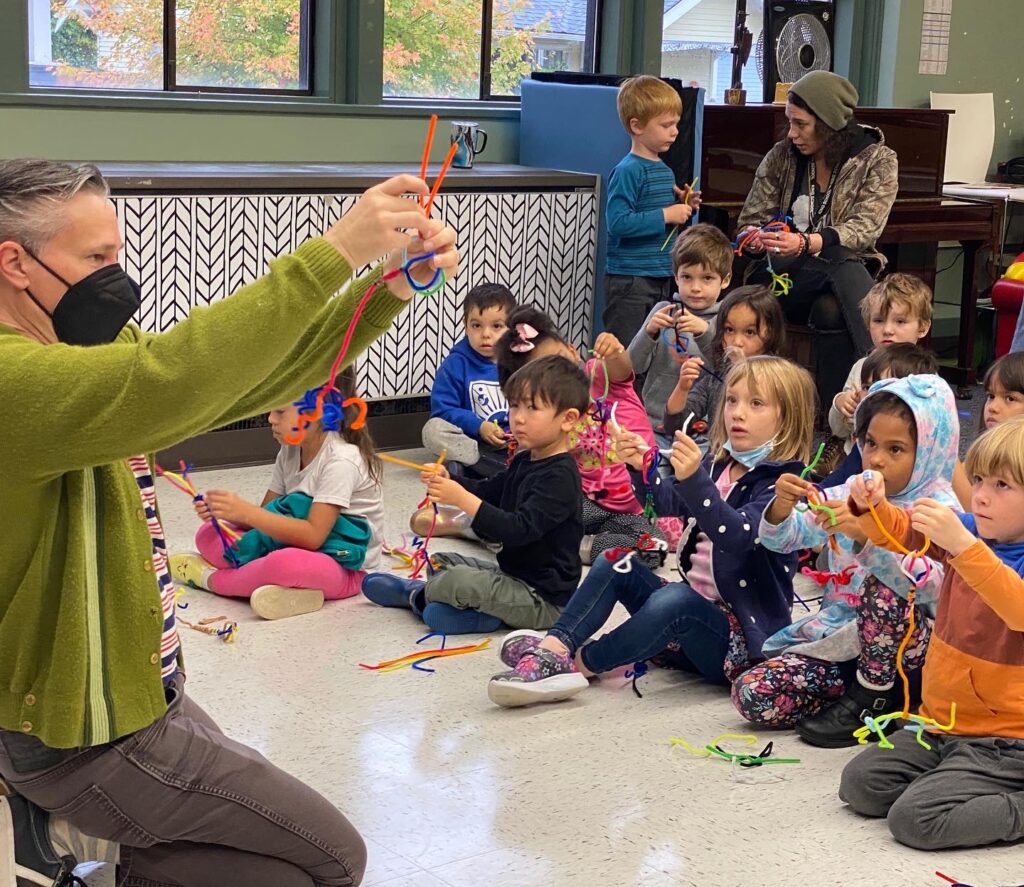
Seidel told me it would be helpful if “mini lessons” could be developed for teachers to integrate into their classrooms before our visit. She also thought that a follow up visit later in the year would be beneficial to extend the student’s learning. Some topics Seidel thought that students would enjoy learning about include how our brains control our emotions, and what happens in our brain when we have big emotions.
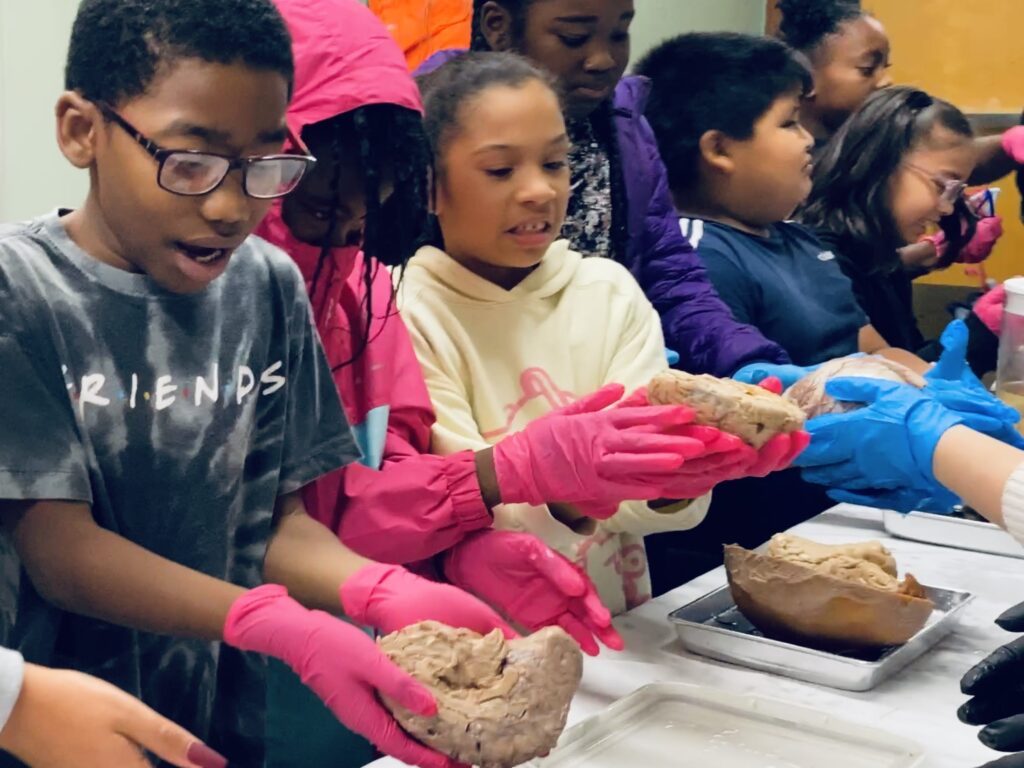
LEARN MORE: New BRAIN BROCHURE by Noggin volunteer Roman Cimkovich
Additionally, she said that it would be amazing if the students could have more interactive time with the donated brains. The primary and secondary education system does not have a curriculum which allows students to learn about the brain. However, through NW Noggin’s visit to MLK Elementary, children are being exposed to concepts that are new and interesting to them. The school faculty also is open to teaching mini lessons that teach their students more about the brain, as well as having follow up visits to further student’s learning. Although it may seem small, the actions we make today could have ripple effects which change the content students are being taught in schools.
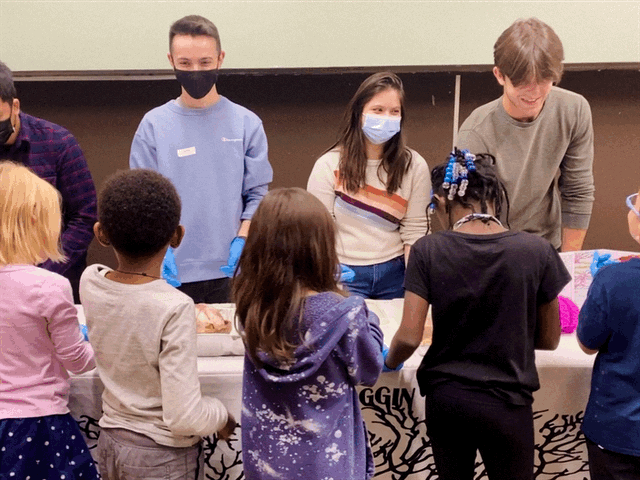
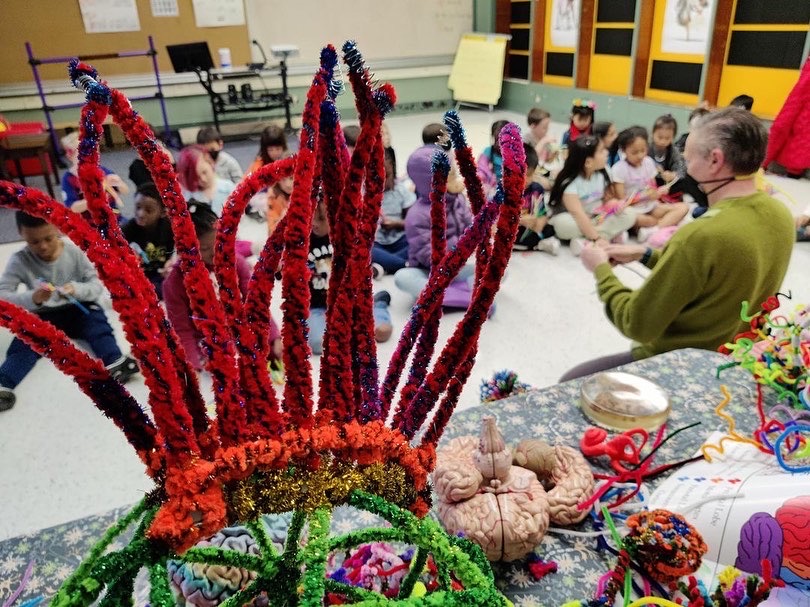
“I just wanted to say a heartfelt thank you! I have two children of my own and all they could talk about Friday evening was the brains! And I went to a soccer game over the weekend and several MLK Parents approached me asking about the brain activity and how cool they thought it was. They mentioned that their kindergartener was explaining at home that “there is a line that runs from my toes to my head and my brain makes my toes work! I am surprised and overjoyed at the response to your visit. I sincerely hope you consider returning to Dr MLK Jr again next fall. TO all of the students, I wish you the best in your studies!”
— Teresa Seidel, Principal, Dr. Martin Luther King Jr. Elementary School
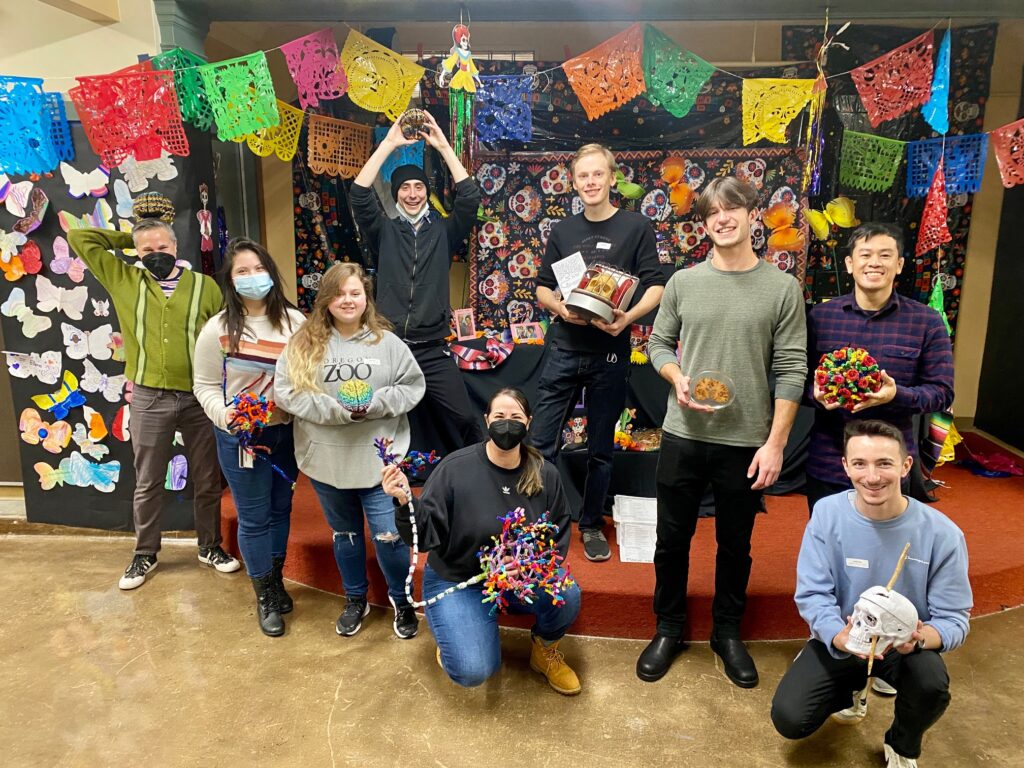
Thank you students, teachers and staff for welcoming us all to King!
And thank you NW Noggin volunteers at King: Alex Phanphackdy, Natalie Partipilo, Roman Cimkovich, Abigail Zoske, Marc Chenard, Conner Corbett and Kass Fitzgerald at Portland State University, and Aaron Eisen, recent PSU graduate and graduate student at OHSU.


